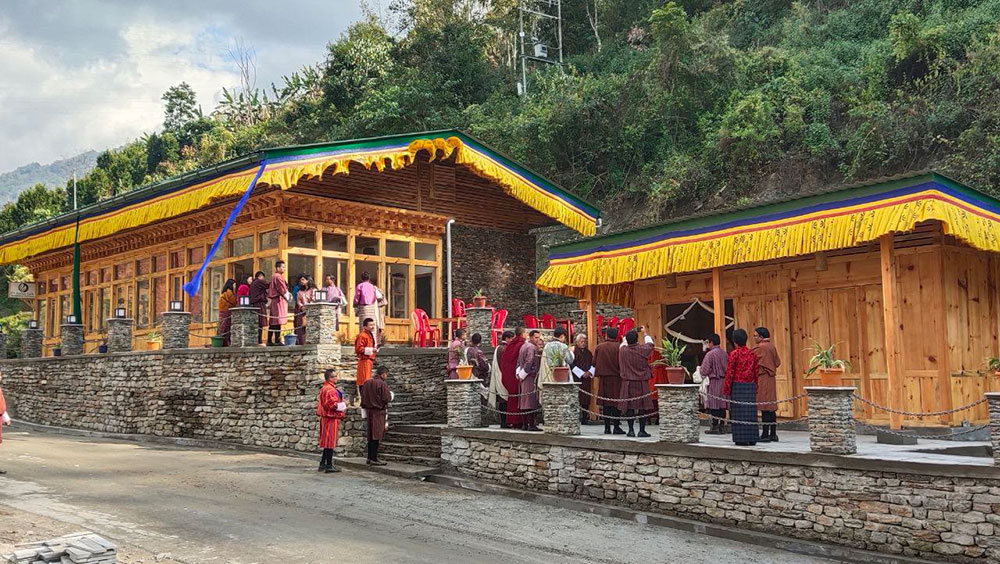Lhakpa Quendren
Despite Zhemgang’s rich culture and biodiversity, challenges in accessibility and infrastructure have impeded its full potential in community-based ecotourism for both international and local tourists. The draft 13th Plan interventions aim to overcome these obstacles, bringing Zhemgang closer to realising its dream of becoming Bhutan’s ecotourism capital.
Recognising the pivotal role of hospitality services in promoting community-based ecotourism, the dzongkhag administration has established roadside amenities at Wangdigang and Tingtibi.
These facilities encompass cafes, souvenir shops, farm outlets, parking lots, and restrooms.
While Zhemgang lacks a certified tourist-rated hotel, the roadside amenities, the Berti White-bellied Heron (WBH) Eco-lodge, and certified homestays collectively offer an enriching experience for visitors. The Berti WBH Eco-lodge provides high-end cabin accommodations with tent and open camping options.
Zhemgang’s planning officer, Norbu Jamtsho, emphasizes that these facilities aim to cater to visitors to the ecotourism capital and provide respite to travellers along the Trongsa-Zhemgang-Gelephu highway. Activities such as bird watching, touring the beautiful Berti village, visiting Bermo Botanical Park, and participating in capture fishery are highlighted as potential attractions.
With the growth of community-based ecotourism, Zhemgang has the potential to become a hotspot, providing a sustainable source of income for its residents. Ecotourism development is expected to alleviate rural poverty by engaging the community in offering tourism services, including lodging, roadside stations, birding guides, the sale of local products, and camping services.
“The community benefits include not only employment generation but the sale of local products beyond arts and crafts and additional income that can be generated through the sale of agriculture and livestock products,” said Norbu Jamtsho.
To achieve these goals, the dzongkhag has outlined several prioritised tourism development activities in the 13th Plan, including the development of Buli Recreational Lake, Trong Heritage as a viable tourism products, Twin Waterfall Beautification, additional facilities at Berti WBH Eco-lodge and campsite, Tamala roadside amenities, and trail developments.
The dzongkhag also plans to foster the creation of ecotourism entrepreneurs, such as local birding guides, river guides, and capture fishery operators. Capacity building for local service providers, including homestay operators, eco-lodge members, and café operators, is deemed crucial to ensure the delivery of standard and quality services.
Furthermore, the dzongkhag administration aims to initiate robust marketing campaigns to promote Zhemgang as one of the premier tourist destinations. Covering a vast majority of its area with forests and hosting rare and endangered wildlife, Zhemgang is home to diverse flora and fauna, making it an attractive destination for nature enthusiasts.
Despite these natural attractions, Zhemgang has faced challenges in tourism development, with poor infrastructure and a scarcity of tourism products and services. Past initiatives have lacked impact due to inadequate planning and evaluation.
Only 346 international tourists visited the region in 2019. Currently, international tourists must either travel from Paro International Airport, drive from Bumthang, or enter from Gelephu.
It has also been observed that past tourism development initiatives have not been impactful to the communities because of poor planning and evaluation.
The dzongkhag emphasises the need for coordinated efforts among donors, implementers, and local stakeholders for effective tourism development.


